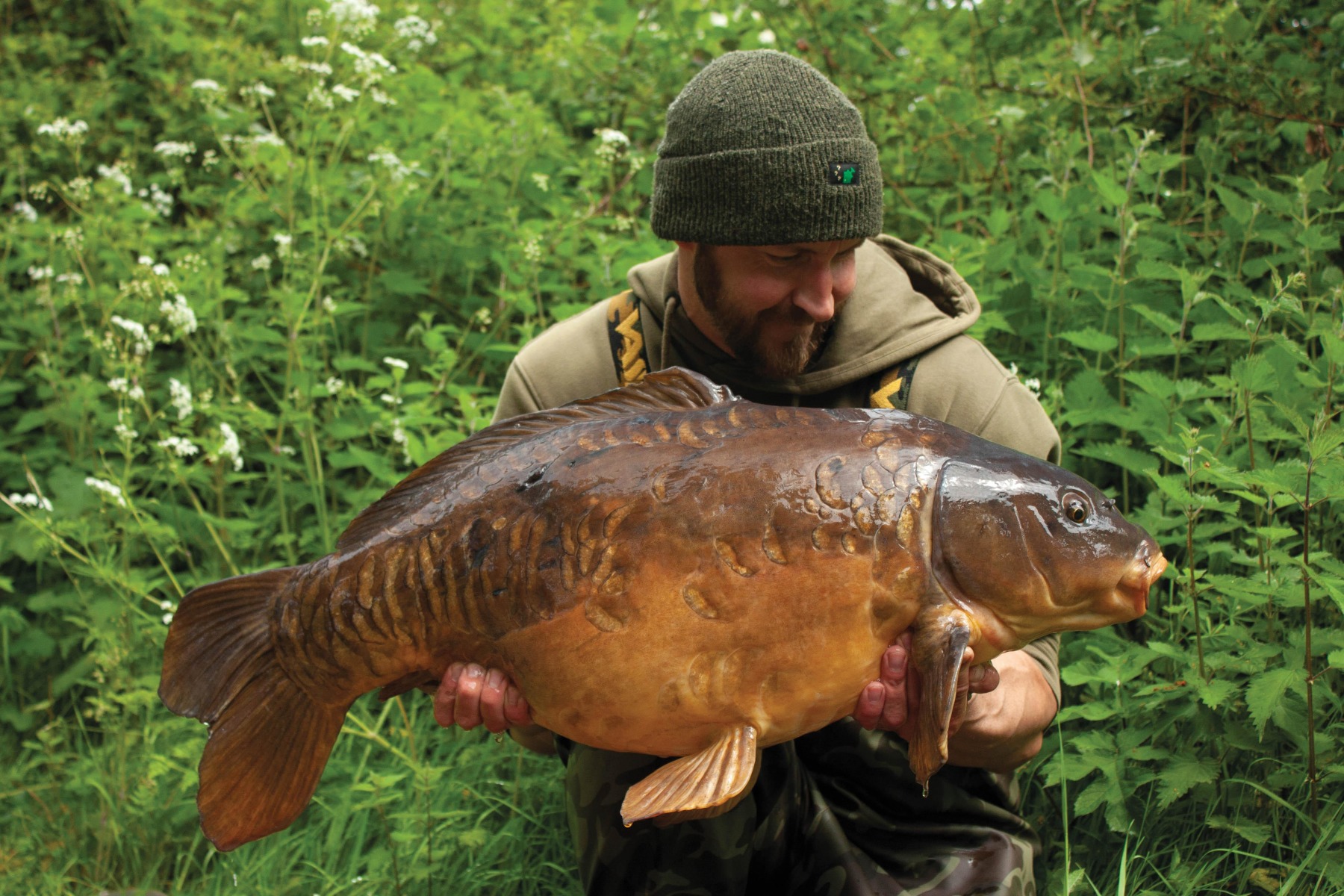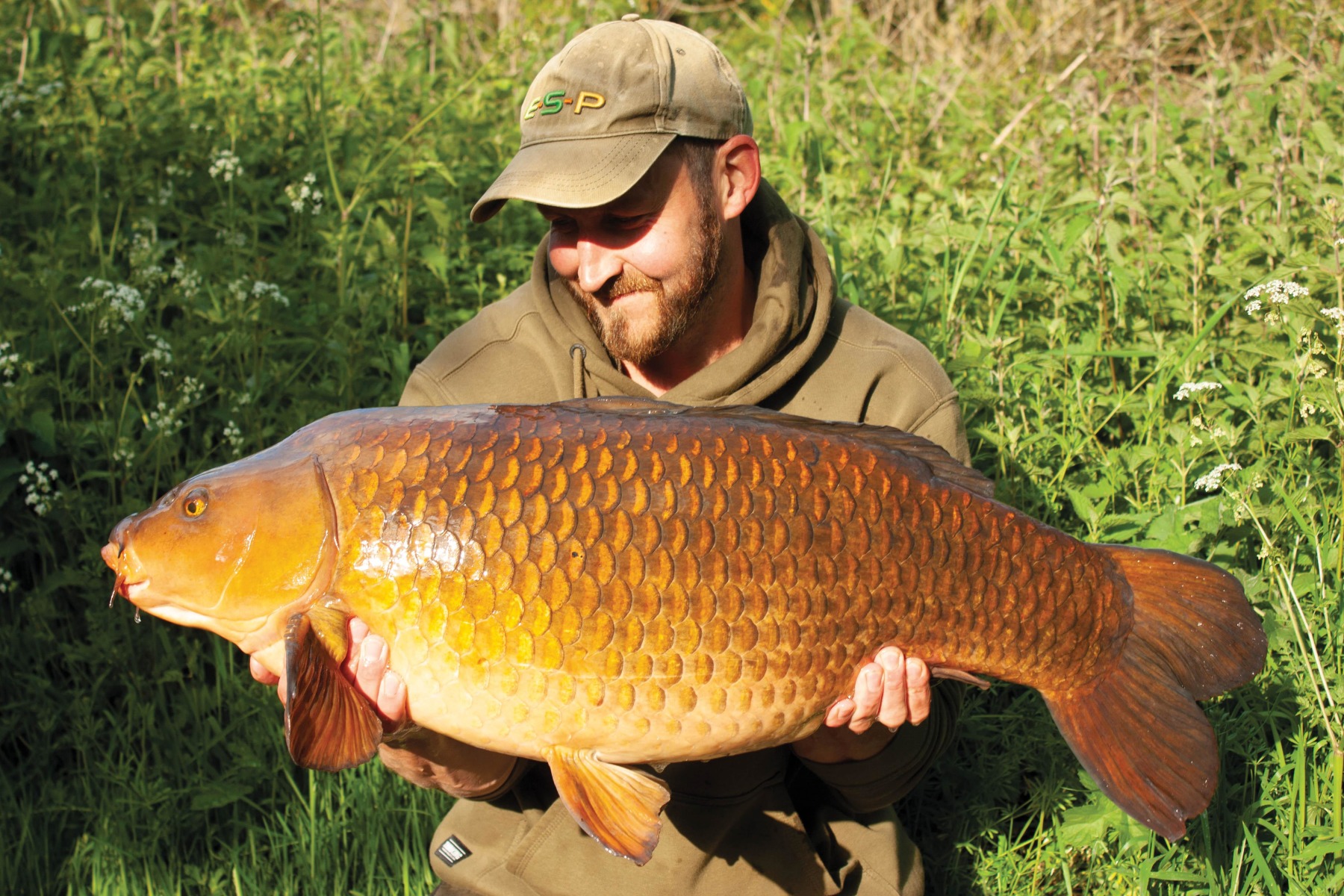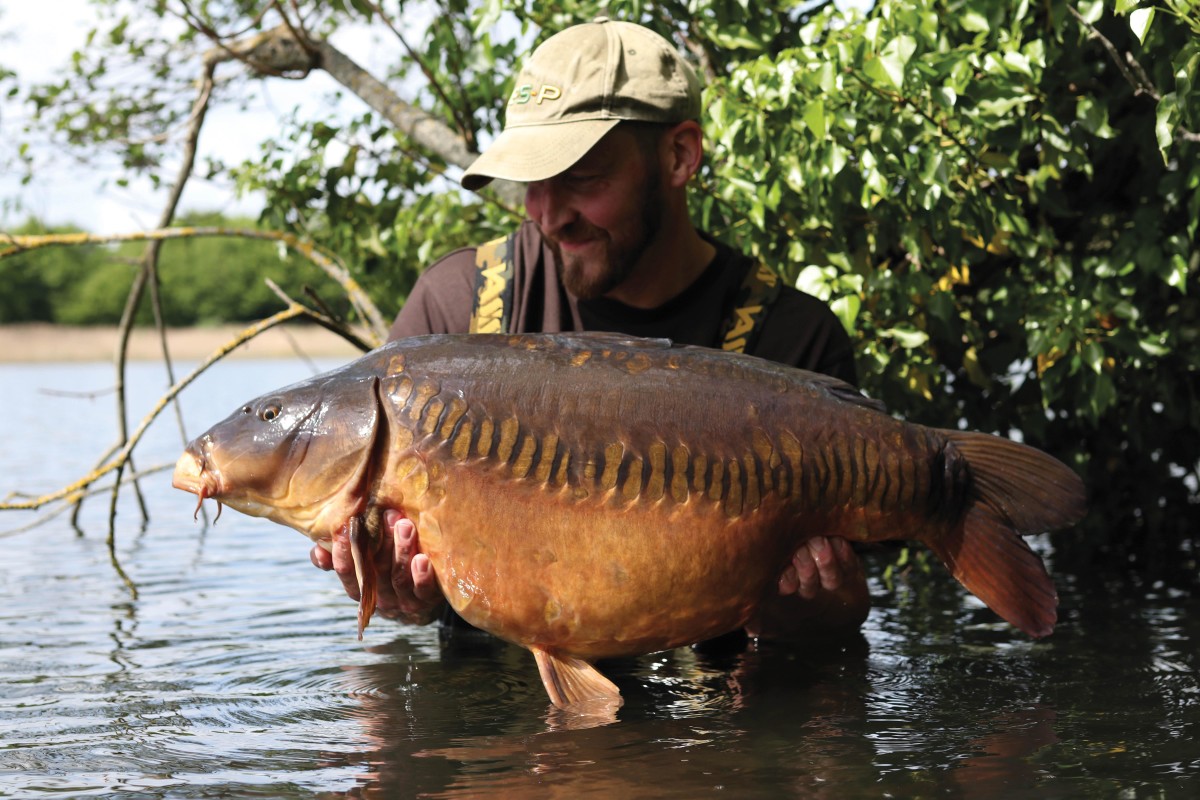
Seasonal Change
In the first article in a short series, Alex West looks back at his time on Dinton White Swan as he dovetails his campaign on there with that on another water…
One thing I love about living in England and being outside here, is the stark contrast between the four seasons. Spring, summer, autumn and winter offer a huge variety of weather conditions, lunar effects, sunlight, colour changes, smells and overall atmosphere on the waters I fish, and these provide the angler with a never-ending combination of angling scenarios. Every session is different, and it often seems like you’re on a new adventure. The journey varies as you search for big carp. You have to adapt in order to stay one step ahead of not only your quarry, but on the busy lakes, the other anglers, too.
In this mini-series I’ll try to recount observations, details of tactics, lessons learned and my experiences through the changing seasons. I’ll recall the tweaks I’ve made, and indeed had to make whilst targeting some truly incredible carp, real fish of a lifetime that some might say are among the most sought-after in the South of England, such is the intensity and level of angling on the lakes in which these special creatures reside. Then there’s the kudos these old carp attract, and their impressive heritage. It’s funny how these fish swim around doing their own thing, completely unaware of how special they are regarded by the angling fraternity. They’re celebrities in their own right.
The two lakes which have captured my attention the most this season are similar in the sense that they are both mature gravel pits. They’re both also extremely weedy and incredibly busy, and they contain stunning carp that have seen it all from some of the country’s best anglers. As such, they know every trick in the book.
Stories are passed of many an angler trying their luck, and those who’ve looked to take up the challenge of unlocking a lake’s gems. Tales are told of anglers doing 300 nights without capturing the big ’un, yet this only adds to the appeal. The two waters I allude too, however, couldn’t be more different in size, shape, stock and topography.
One of the venues has a three-night limit. Dinton White Swan is 24-acres in size and holds 200-odd carp. It’s shaped like a dog leg, a maximum of 150yd across and quite long and canal-shaped. The other lake is around half the size with large shallow and weedy zones, and is set in a pretty rough area. Let’s just call it ‘the other lake’.
Dinton White Swan famously produces the most beautiful carp, colour- and proportion-wise. The other lake contains a real mixed bag, with one very large mirror at the top of the list.
I first joined Dinton five years ago. Originally, I set out to catch Triple Row and the Twin, which sadly passed away a few years back. As is the usual practice, I didn’t solely fish on White Swan. Instead, I would return when the time seemed right. Besides, once I had seen one of the other, slightly smaller member of the A-team, Son of Triple Row—or ‘the Son’—on the bank, that fish became a new target. Despite it not being the largest fish in the pond, in my eyes it was the most incredibly beautiful carp I’d laid my eyes on in terms of both colouration and proportions. Arguably, it’s one of the best looking carp in the country.
On my very first trip, back in April 2018, I was fortunate enough to catch Triple Row, at 44lb-plus, on a single hookbait cast to shows on the end of a lovely mild, southerly wind. By over-casting and reeling back to shows where possible, disturbance was reduced.
Triple Row was out of the way, but with more than a few others still to go at, I kept the ticket, as I had the Son in mind for later seasons. Over the years, it’s become clear that the best time of year to catch these tricky carp is between March and September, so spring through to late summer, only a handful of captures usually being recorded outside these periods.
With time on my side, I decided that this season was going to be the year I gave it my all for the Son, as I’d been fortunate enough to catch Darren’s Lin, one of the remaining A-team members and now the biggest in the pit, during my first season.
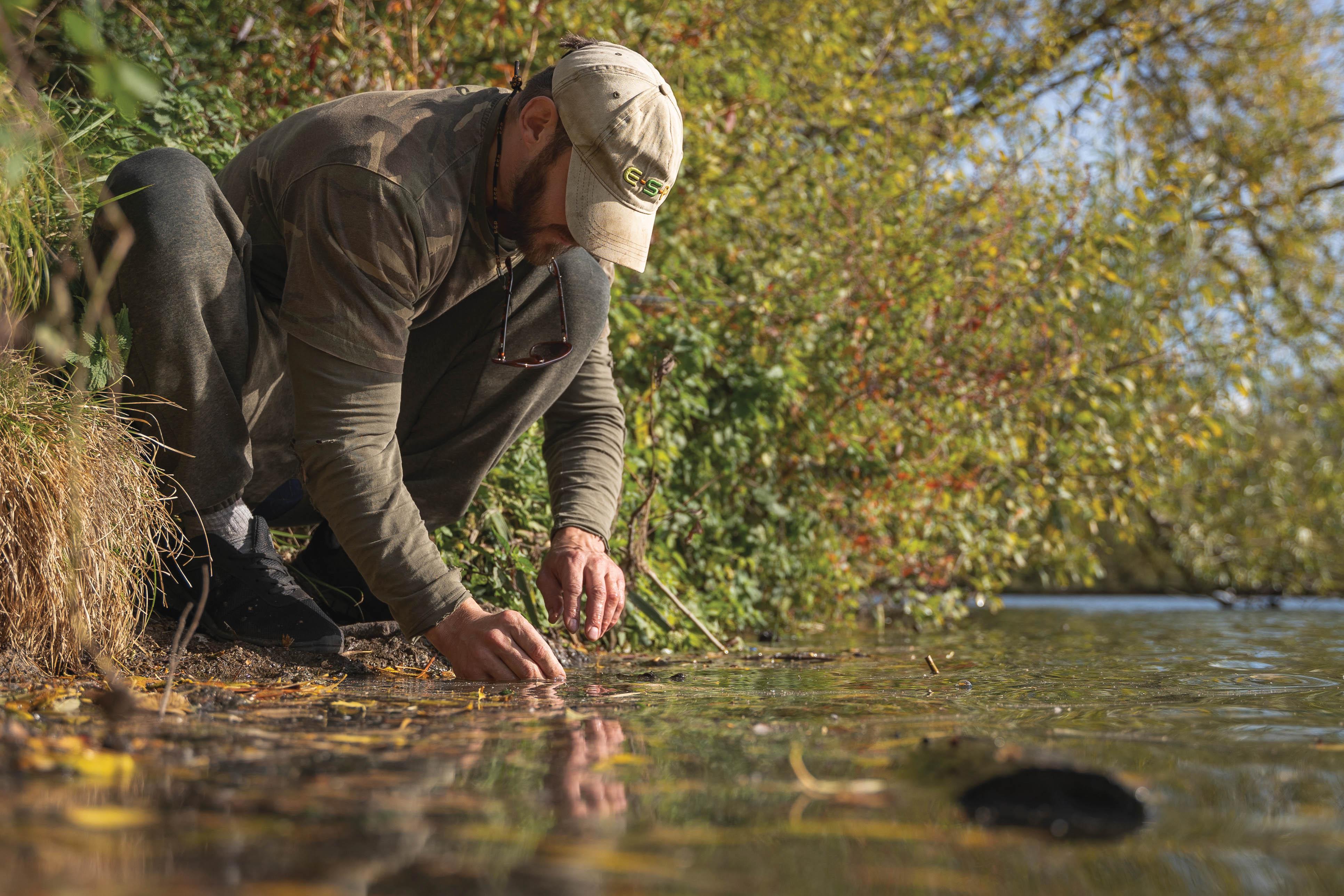
FOCUSED MINDSET
I hatched a plan to start my Dinton campaign in April, fishing mostly three nights a week and starting on the Sunday and Monday when the lake had quietened down—such is not always the case, mind, as several other ultra-keen anglers often have the same idea. I’d already been walking the other lake regularly and had kept in touch with a mate who had been fishing it and just getting a feel for it. I’d not planned to fish the other lake as soon as I did. The big ’un fluctuates in weight, looks much healthier in the colder months and still gets caught, right through the seasons. I look at past captures, note the times of year my target fish have been caught, and the apparent favoured conditions.
The first few trips to White Swan resulted in blanks. I tried Zigs and a subtle variation of the Spinner. I also fished small, bright ones on the deck, over the top of bits and bobs. These were classic spring tactics that had scored in the past, so I thought that perhaps an even more subtle approach was required. Even from those first trips, I had the Son on my mind, and was beginning to focus more of my efforts towards a little-fished swim in the ‘Jaffa’ zone, as its known, near the top end, but not right up the ‘bowel’ section between Plumbers and Peg 6. I had a strong feeling that because its previous seasons’ two captures were from the opposite end of the lake, it would return to its favoured feeding grounds ahead of its next capture.
On the next trip, I headed straight for Peg 9, where I’d previously baited lightly with a more dulled-down bait combination. This included a special maple- and hemp-based mix from Wraysbury Baits, boilie crumb and pellets from Trent Baits, and groundbait. Not only was it a likely zone where the Son might make an appearance, the carp at that end would often show and feed on naturals in the flourishing weed, right from first light up until lunchtime.
After trickling bait onto a spot out towards an under-fished swim in the middle of the section a few times, I felt my best chance of a take would come by fishing the area with just one rod. Other anglers had also clocked the activity and were fishing in the swims adjacent, so I felt less was more, both in respect of the lines and any disturbance from casting.
That first night and morning were quiet. Then, at around 1.30 p.m. after I’d dozed off, I was woken up by an absolutely screaming Neville. After I’d slipped on my waders and taken to the water, my line was still ripping from the spool. I hesitated when lifting into the fish, such was the ferocity of the take, and when I did, I felt the full force of a powerful carp on the other end. I’d placed the rod to the side of the swim, on long banksticks between the reeds to improve the line angle to the spot. By changing the line angles, I feel that I keep pressured carp guessing.
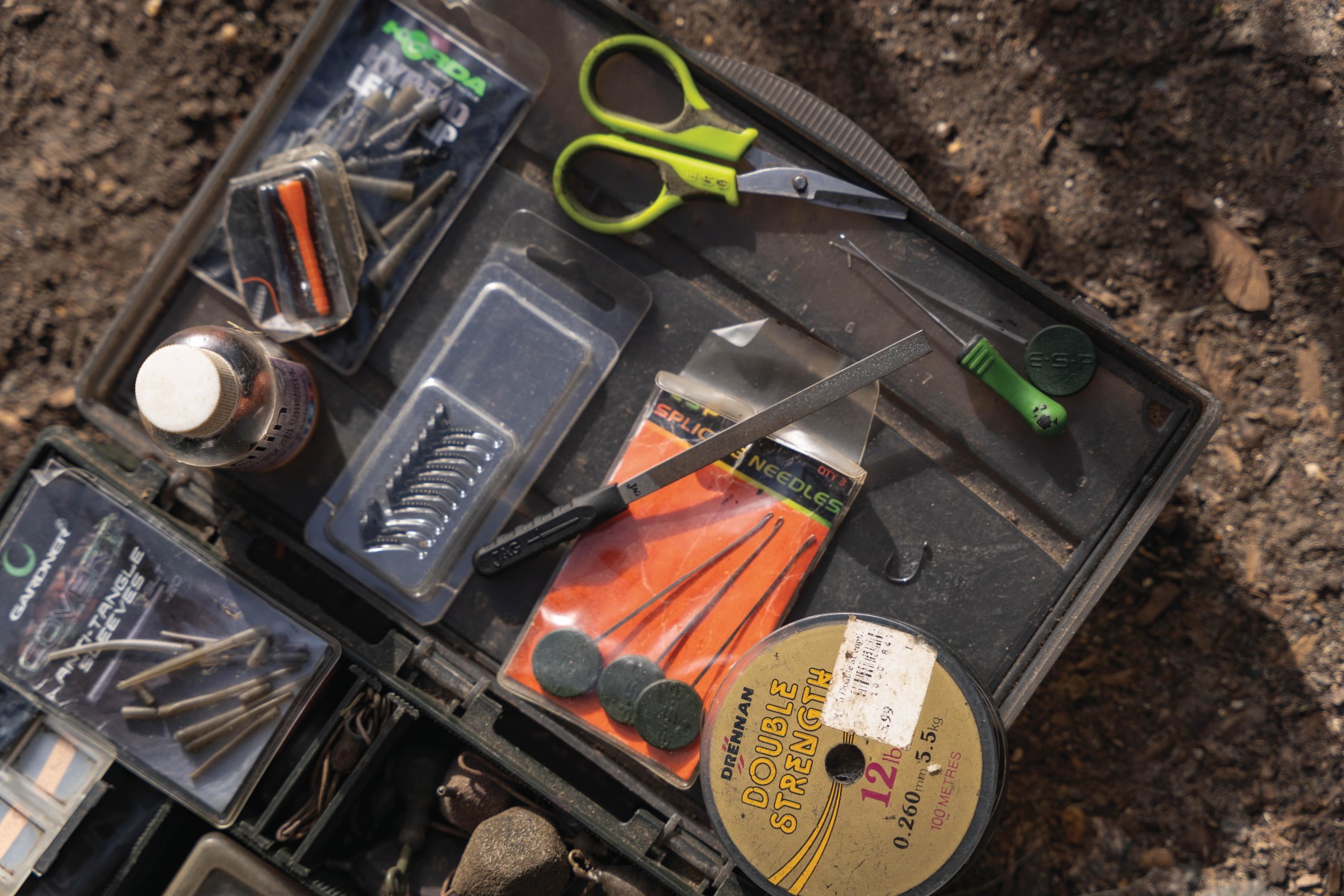
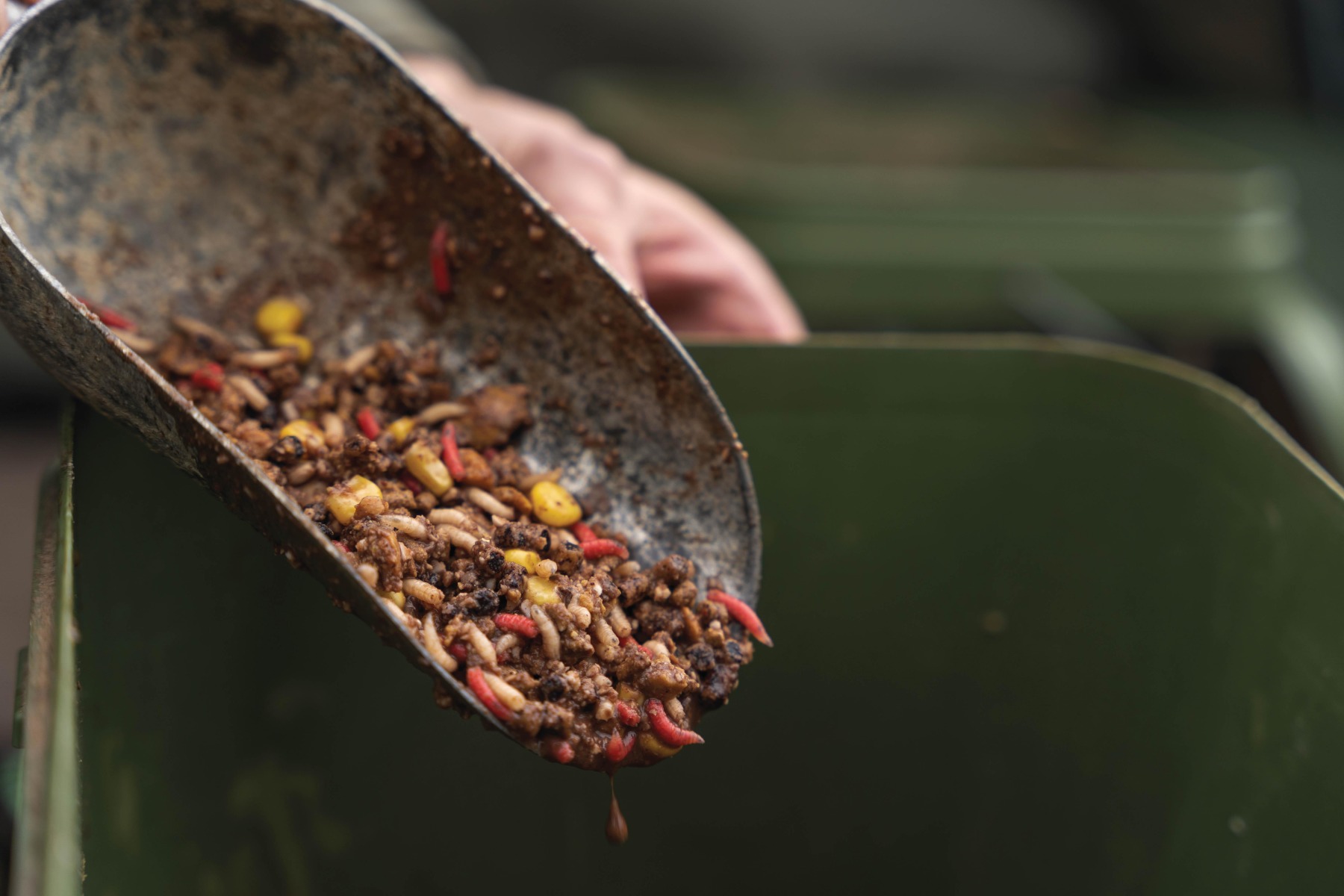
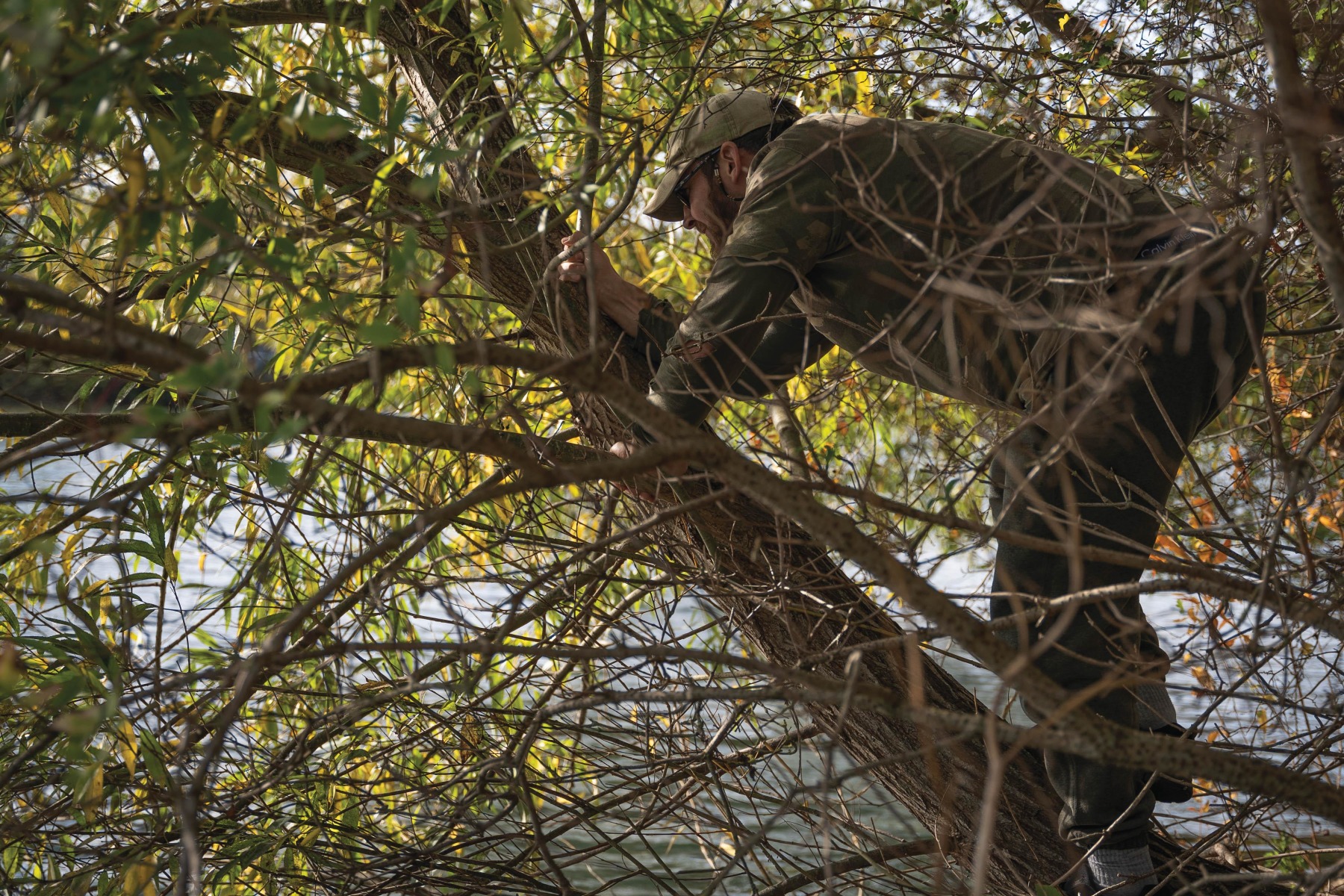
After being led a proper merry dance, my first carp of the season was banked. Happy days! It was a good fish, too. At 35lb 8oz, the Tufty Linear was mine. A lovely plump mirror, it had that distinct orangey colour to its flanks—a classic south Sandford, Dinton carp. The slightly more subtle approach using less-than-obvious food items amongst the sprouting weed that contained their natural food, seemed to be the one… at the time, anyway. All too frequently on pressured lakes, carp seem to wise up to a winning combination and the bites dry up as quickly as they came.
No sooner had I put the first one back than another lake member jumped into the swim next door. I had become hemmed in. To make matters worse, come the following morning, the swims either side of me did bites, whilst I had no further action. I decided there and then to move to the swim to the left of Peg 9. Known as the Oaks, the swim put me in a much better position to intercept carp moving in and out of the top bay, given that it commanded more water than Peg 9. Also, it reduced the chances of me being hemmed in, as the swims either side of it are less favourable. The Oaks also had previous form for big fish, so it seemed an ideal spot to concentrate my efforts from.
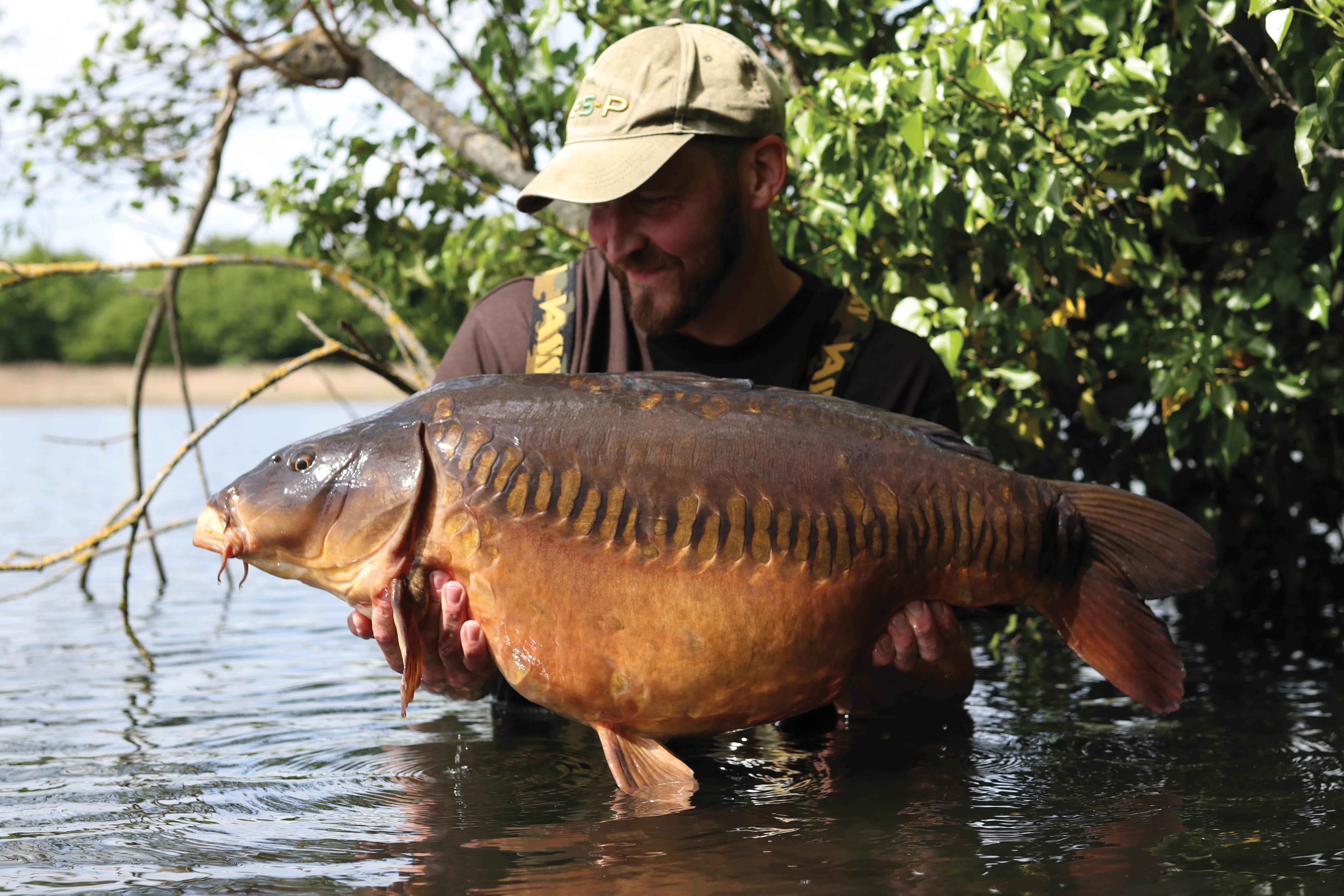
‘THE OTHER LAKE’
Around this time, I’d also made a few more quick trips to the other lake, and on one occasion I took a rod and fished way up the bank from where a mate, Stu, was fishing. It was all a bit half-hearted on the fishing side of things and more a jolly-up, to be fair. Surprisingly, as dawn broke the next morning, there were fish—either carp or tench, I wasn’t sure—fizzing and bubbling all around the rig. Suffice to say, nothing transpired. I felt close, though. It was all good experience. The rod-hours certainly weren’t wasted and it all helped to build the picture of things to come.
The rest of the spring on Dinton, I fished the Oaks, mainly, or nearby when I couldn’t get in there. I banked six more carp and these included three additional thirties. There was a long, scaly male with a huge tail, an original, Tango-orange common, and the characterful Mr Angry, which certainly lived up to its name. That mirror put up a right old scrap, and the boiling lunges under the rod tip amongst the fast-growing Canadian pondweed really got the adrenaline flowing. These fish came to either single low pop-ups, or wafters over a bit of bait on a very versatile rig that allowed for a quick change of hook. This offered a clear advantage, especially when reeling in a cast made to the pondweed that inevitably would blunt the hook.
The hook is something I’d say should be meticulously checked. I might have mentioned it before, but if there’s something wrong—a dulled point or nick in the line, perhaps—carp in these types of lake will find the flaw. The pH levels in these waters are harsh. There’s the clay lakebed and there are tiny zebra mussels in the weed. Fortunately, I managed to land every fish I hooked at Dinton this year, so the constant checking paid off.
Interestingly, I ended up completely changing hook patterns over the spring and summer, for various reasons, but perhaps I will cover that in more detail next time. As soon as the ball started to roll, so to speak, the close season was upon us as Dinton shut for a month whilst the carp completed their annual spawning ritual. Of course, the obvious option was to visit the other lake in a bid to get to grips with it, ready for when I anticipated spending more time over there, in the colder months. Little did I know how well things would go over the next four weeks, however, and what surprises lay in store…
